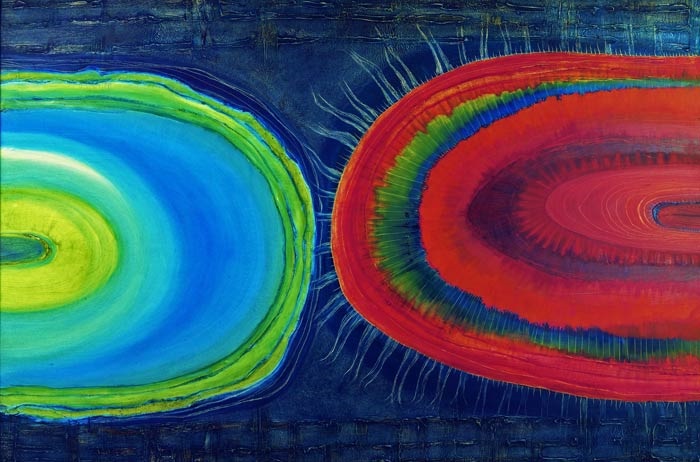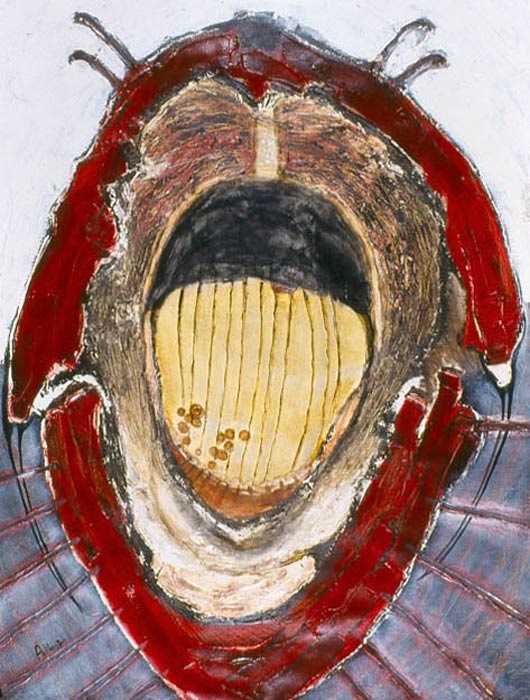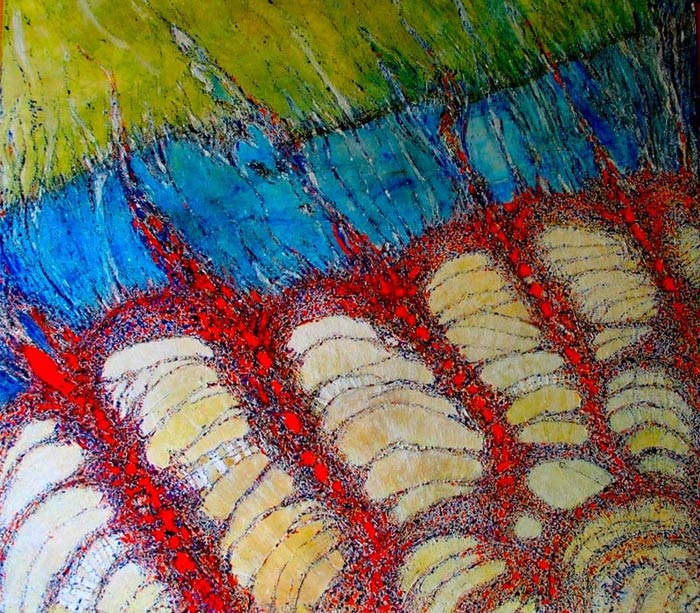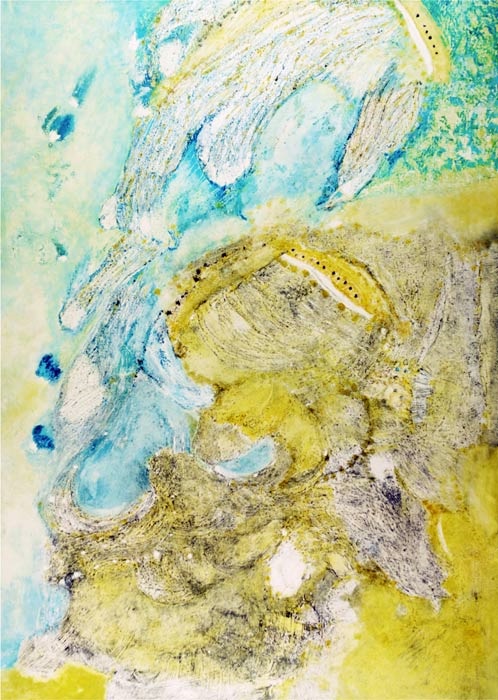Sara Adlerstein: Ecologies, My True Colors

Sara Adlerstein, Love Story, 32 x 48″, mixed media on masonite
Sara Adlerstein’s paintings are the featured work at WSG right now. Each of us who co-own the gallery has the opportunity to mount a solo exhibit about every 2 years. So we have quite a bit of lead time as we plan for our shows. For someone like Adlerstein, it can take that whole time to build a body of work large enough for a solo exhibit. She works on one painting at a time, start to finish.
When we have a solo show, we exhibit all new work that has not been seen at the gallery before. This means we are working on a body of work concurrently with the work we continue to show at the gallery – that changing show calendar is a demanding lover! An interview with the artist follows:
- Recently, you gave a short talk at the gallery about your process – how you physically work with the paint. Will you please speak about how you came to work that way and why?
My formal training comes from a science background. As such, the way I paint is the result of continuous experimentation. That means that I learn what I like as I do. I have also learned to work in my home and find creative ways to deal with limited space and keeping the living environment safe for the whole family. Because I prefer to paint with oils and using brushes requires using nasty solvents to clean them. Thus, I resolved to spread the oils with old rugs I can just discard and with [palette] knives.

Sara Adlerstein, Stop the Oil Spills, 32 x 48″, mixed media on masonite
- Your surfaces are very tactile. They somehow bring your scientific background into the artwork in a more tangible way. How do you build up the surfaces of your paintings and how deliberate is the build-up? That is, does the composition drive the surface build-up or vice versa?
The surfaces build themselves in a natural process. Sometimes I prime the surface and add modeling paste or other thick materials. But much of what seems tactile is also an illusion as subtle textures are amplified by layers of color. There’s nothing deliberate about what I do, it just happens and I am an engaged observer. I do not decide on composition, the ideas develop in front of my eyes. At the most, I will choose a color to get started and from there it is a continuous improvisation.
- Blue is a color that features prominently in your work. What is its significance for you?
I love blue. I am Pisces; I was born by the Pacific Ocean, close to a giant river; and lived with the constant presence of the sky. So, I guess, blue is home.

Sara Adlerstein, Unionids,
- When did you first start integrating art into your scientific teaching?
I do integrate art with environmental sciences within courses that are considered to be in the humanities. I have been teaching such courses for about 15 years at the University of Michigan in different units (art and science units) and at the undergraduate and graduate levels.
- How has the integration of art and science changed your students’ experiences as scientists? That is to say, what have you heard over the years from them regarding this?
I teach mostly students in interdisciplinary programs and, now, a school whose mission is to save the planet. Integration of art and environmental sciences makes them feel as a whole person. The students appreciate the opportunity to express their perspectives and reflect as humans. They mostly love to discover the power of art and the endless possibilities.

Sara Adlerstein, Milkweeds, 32 x 48″, mixed media on masonite
- How do you feel painting has helped you speak to your environmental concerns?
My paintings help me to communicate in a different language than the one I use to document academic research. Art opens the heart and can reach the general public unlike scientific communication targeted to other scientists. I believe we need both to make a difference.